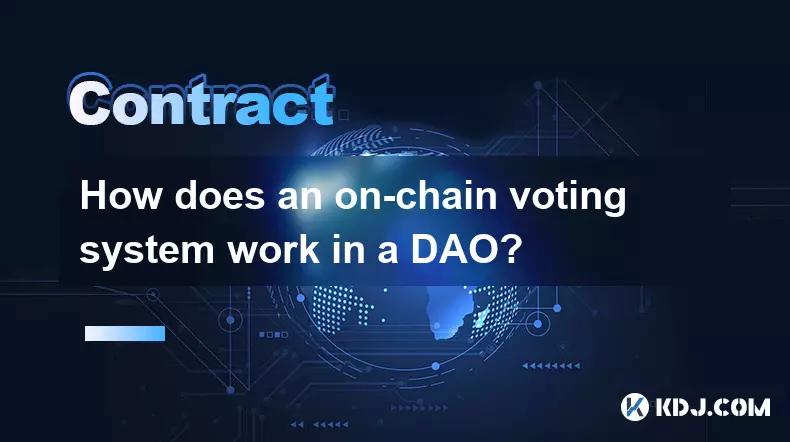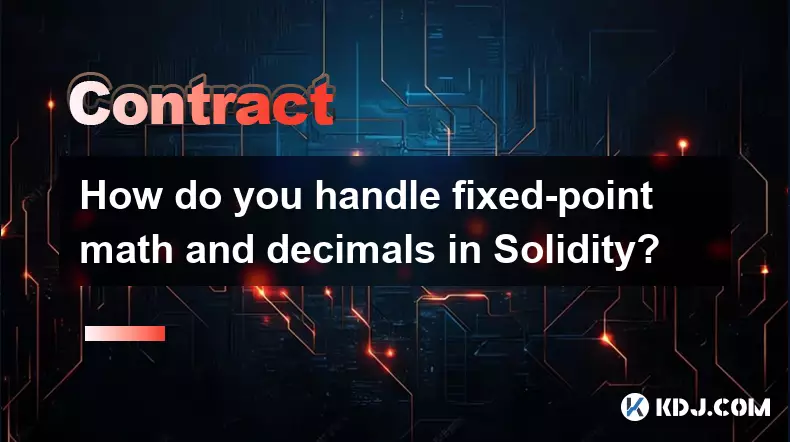-
 bitcoin
bitcoin $101752.865364 USD
-1.09% -
 ethereum
ethereum $3382.985899 USD
-1.38% -
 tether
tether $0.999658 USD
0.04% -
 xrp
xrp $2.272505 USD
-1.51% -
 bnb
bnb $989.089004 USD
0.14% -
 solana
solana $156.962612 USD
-3.08% -
 usd-coin
usd-coin $0.999776 USD
0.01% -
 tron
tron $0.290786 USD
-0.69% -
 dogecoin
dogecoin $0.174594 USD
-2.86% -
 cardano
cardano $0.560085 USD
-3.55% -
 hyperliquid
hyperliquid $40.023704 USD
-5.75% -
 chainlink
chainlink $15.324649 USD
-2.78% -
 bitcoin-cash
bitcoin-cash $493.576540 USD
-3.52% -
 zcash
zcash $571.320038 USD
-12.05% -
 stellar
stellar $0.280066 USD
-4.26%
The 2025 Guide to Profitable Crypto Futures and Derivatives Trading.
In 2025, crypto derivatives offer advanced trading tools with improved transparency, institutional adoption, and diverse strategies—from arbitrage to hedging—amid tighter regulations and growing market maturity.
Nov 01, 2025 at 07:39 pm

Understanding Crypto Futures and Derivatives in 2025
1. Crypto futures are financial contracts obligating the buyer to purchase, or the seller to sell, a specific cryptocurrency at a predetermined future date and price. These instruments allow traders to speculate on price movements without owning the underlying asset. In 2025, major exchanges offer futures for Bitcoin, Ethereum, Solana, and select altcoins with high liquidity.
2. Derivatives encompass a broader category including options, perpetual swaps, and structured products. Perpetual contracts have gained dominance due to their lack of expiration and funding rate mechanisms that keep prices aligned with spot markets. Traders use these tools to hedge portfolios or amplify gains through leverage.
3. Regulatory clarity in key jurisdictions has improved market structure. Exchanges now operate under stricter compliance frameworks, reducing counterparty risk. Institutional participation has surged, bringing algorithmic trading systems and deeper order books into the derivatives space.
4. Market transparency has increased with real-time open interest tracking, volume analytics, and on-chain data integration, enabling more informed decision-making.
5. Centralized platforms like Binance, Bybit, and OKX dominate trading volume, while decentralized derivatives protocols such as dYdX and GMX have expanded their reach using Layer 2 scaling solutions to reduce fees and latency.
Strategies for Maximizing Returns
1. Trend-following strategies remain effective when combined with macroeconomic indicators. Traders monitor Federal Reserve policy shifts, inflation reports, and on-chain metrics like exchange outflows to identify bullish or bearish momentum.
2. Mean reversion techniques work well during consolidation phases. Using Bollinger Bands and RSI, traders enter short positions near upper bands and longs near lower bands, especially on high-liquidity perpetuals.
3. Arbitrage between spot and futures markets continues to yield consistent profits, particularly during events like ETF approvals or network upgrades when price discrepancies emerge across exchanges.
4. Basis trading—exploiting the difference between futures and spot prices—has become more accessible with automated bots that execute entries when annualized basis exceeds historical averages.
5. Scalping with tight stop-losses is popular among day traders using 5x to 10x leverage. Success depends on low-latency execution, precise entry timing, and strict risk discipline.
Risk Management and Leverage Control
1. Over-leveraging remains the leading cause of liquidation. Seasoned traders cap leverage at 10x unless deploying hedged positions. Isolated margin usage prevents total account wipeouts during volatile swings.
2. Stop-loss orders must be placed based on volatility thresholds, not fixed percentages. Tools like ATR (Average True Range) help set dynamic exit points that adapt to market conditions.
3. Position sizing should never exceed 5% of total capital per trade, ensuring survivability through extended drawdowns and black swan events like exchange collapses or flash crashes.
4. Monitoring funding rates helps avoid entering longs during excessively positive rates or shorts when negative rates indicate overcrowded bearish sentiment. Prolonged extreme funding often precedes reversals.
5. Diversifying across multiple derivative types—such as holding call options while running short futures—can balance exposure and reduce vulnerability to single-point failures.
Frequently Asked Questions
What is the difference between a futures contract and a perpetual swap?A futures contract has a fixed expiration date and settlement price, whereas a perpetual swap does not expire and uses a funding rate mechanism to tether its price to the underlying spot market. Perpetuals are preferred by short-term traders seeking continuous exposure.
How do exchanges prevent manipulation in crypto derivatives markets?Top-tier exchanges employ advanced surveillance systems, enforce position limits, publish real-time open interest, and use mark price calculations to prevent unfair liquidations. Third-party audits and regulatory oversight further deter manipulative practices.
Can retail traders compete with institutional players in derivatives?Yes, retail traders can remain competitive by leveraging speed, agility, and niche strategies. While institutions control larger volumes, individuals benefit from faster decision-making and access to the same data analytics and trading tools.
What role does on-chain data play in derivatives trading?On-chain metrics such as large transaction flows, exchange reserves, and whale wallet movements provide early signals about potential price shifts. When combined with derivatives data like liquidation heatmaps, they form a comprehensive edge in directional forecasting.
Disclaimer:info@kdj.com
The information provided is not trading advice. kdj.com does not assume any responsibility for any investments made based on the information provided in this article. Cryptocurrencies are highly volatile and it is highly recommended that you invest with caution after thorough research!
If you believe that the content used on this website infringes your copyright, please contact us immediately (info@kdj.com) and we will delete it promptly.
- Ripple (XRP) in 2026: Hold or Fold? A Look at XRP's Future and Emerging DeFi Alternatives
- 2025-11-08 18:35:01
- Zcash ZEC Coin Price Explosion: From Privacy Niche to Center Stage
- 2025-11-08 18:55:01
- Berachain Price Prediction: Navigating the Honeycomb Hype in Crypto
- 2025-11-08 18:55:01
- Arthur Hayes, Gold, and Bitcoin: A Modern Monetary Trinity?
- 2025-11-08 19:15:01
- Shiba Inu's Next Move: Navigating a Shifting Market
- 2025-11-08 19:20:01
- Pakistan's Crypto Crossroads: Balancing Opportunity with Asset-Backed Realities
- 2025-11-08 19:20:01
Related knowledge

How do you safely send Ether to another contract?
Nov 09,2025 at 06:40pm
Sending Ether to Smart Contracts: Key Considerations1. Verify that the receiving contract has a payable fallback function or a designated payable func...

What is a state machine and how can a contract be designed as one?
Nov 08,2025 at 02:19pm
Understanding State Machines in Blockchain Context1. A state machine is a computational model used to design systems that transition between defined s...

How does a bonding curve work and how is it used for token sales?
Nov 09,2025 at 04:00pm
Understanding the Mechanics of Bonding Curves1. A bonding curve is a mathematical function that links the price of a token to its supply. As more toke...

How do you upgrade a smart contract using the UUPS proxy pattern?
Nov 09,2025 at 01:19am
Understanding the UUPS Proxy Pattern in Smart Contract DevelopmentThe UUPS (Universal Upgradeable Proxy Standard) pattern has become a cornerstone in ...

How does an on-chain voting system work in a DAO?
Nov 09,2025 at 04:20pm
Understanding On-Chain Voting in DAOs1. An on-chain voting system operates directly on a blockchain network, allowing token holders to cast votes that...

How do you handle fixed-point math and decimals in Solidity?
Nov 08,2025 at 11:40pm
Understanding Fixed-Point Arithmetic in Solidity1. Solidity does not natively support floating-point numbers, which means developers must rely on fixe...

How do you safely send Ether to another contract?
Nov 09,2025 at 06:40pm
Sending Ether to Smart Contracts: Key Considerations1. Verify that the receiving contract has a payable fallback function or a designated payable func...

What is a state machine and how can a contract be designed as one?
Nov 08,2025 at 02:19pm
Understanding State Machines in Blockchain Context1. A state machine is a computational model used to design systems that transition between defined s...

How does a bonding curve work and how is it used for token sales?
Nov 09,2025 at 04:00pm
Understanding the Mechanics of Bonding Curves1. A bonding curve is a mathematical function that links the price of a token to its supply. As more toke...

How do you upgrade a smart contract using the UUPS proxy pattern?
Nov 09,2025 at 01:19am
Understanding the UUPS Proxy Pattern in Smart Contract DevelopmentThe UUPS (Universal Upgradeable Proxy Standard) pattern has become a cornerstone in ...

How does an on-chain voting system work in a DAO?
Nov 09,2025 at 04:20pm
Understanding On-Chain Voting in DAOs1. An on-chain voting system operates directly on a blockchain network, allowing token holders to cast votes that...

How do you handle fixed-point math and decimals in Solidity?
Nov 08,2025 at 11:40pm
Understanding Fixed-Point Arithmetic in Solidity1. Solidity does not natively support floating-point numbers, which means developers must rely on fixe...
See all articles





















![The Graph Price Prediction [GRT Crypto Price News Today] The Graph Price Prediction [GRT Crypto Price News Today]](/uploads/2025/11/07/cryptocurrencies-news/videos/690d4df44fe69_image_500_375.webp)




















































